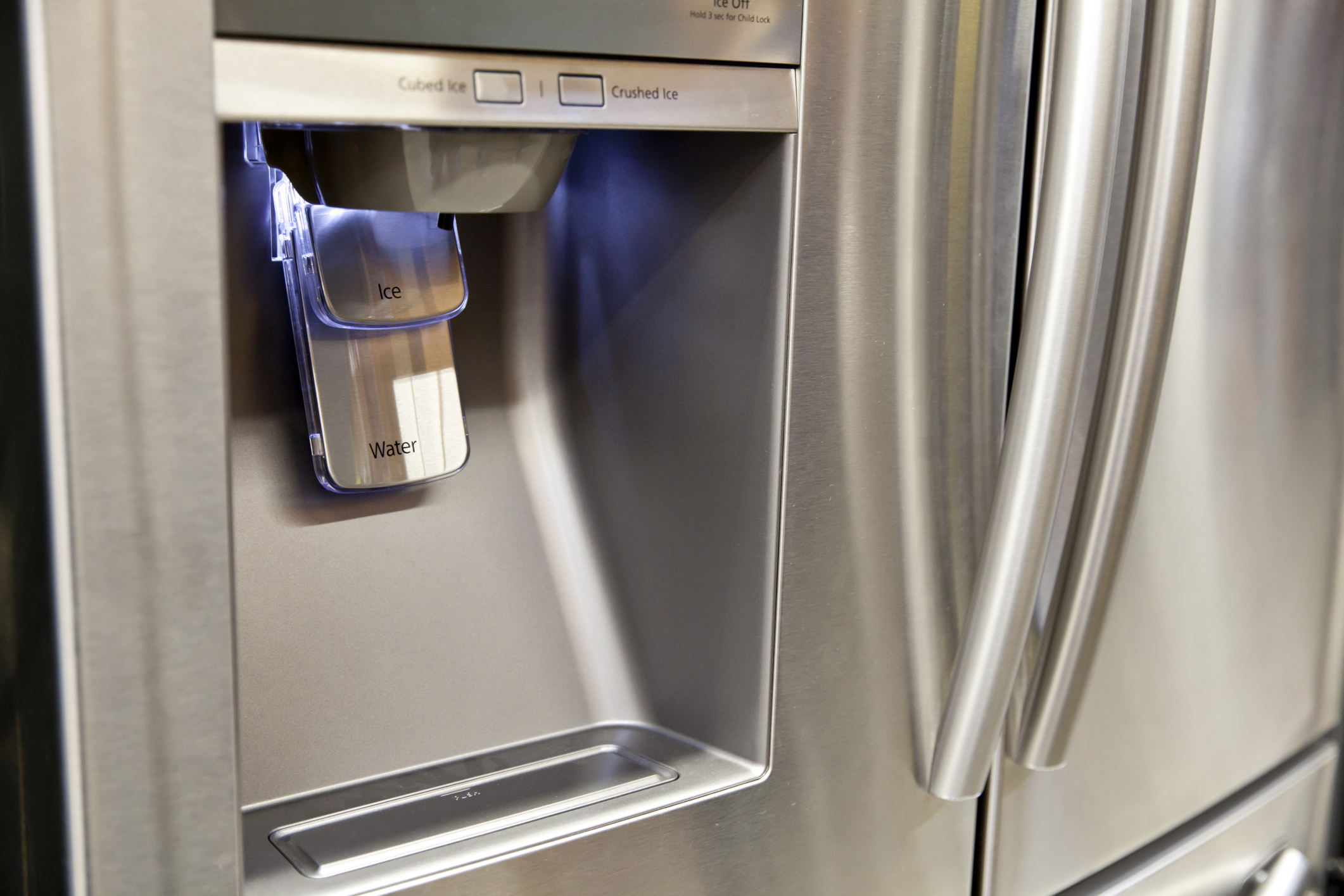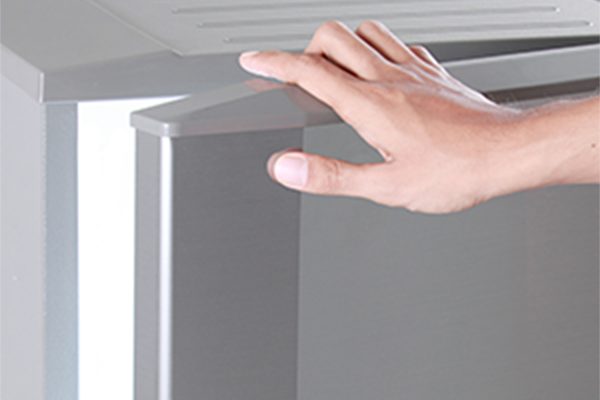[gravata]There are millions of appliances in use, opening space for those working in the segment, but it’s necessary to be attentive to change.[/gravata]

GUSTAVO HAVERROTH
“Consumers tend to opt for exchange
by a more modern and cooler
with more resources “
New consumer demands and habits are making significant changes in features and use of refrigerators as well as in contracting technical assistance services.
Having a refrigerator at home is very common for people of all income levels today. There are millions of appliances in use, representing a large potential market for anyone working with technical assistance. But contractors and parts retailers need to be alert to trends and changes taking place in this area.
Brazil has more than 60 million households and, according to IBGE (Brazilian Institute of Geography and Statistics), virtually all of them have at least one refrigerator. A survey released by the agency, in 2013, showed that 97.3% of households had a refrigerator. These figures show that the household refrigeration market is very broad. However, there is a strong transformation process underway, driven by new consumer habits and demands. “Today, for example, two-door refrigerators – whether frost-free or not – now account for about 70% of the total. The trend is that this percentage will gradually grow”, states Gustavo Haverroth, Product Strategy leader for Household Refrigeration at Embraco. “When they have financial conditions, the trend for the consumer is, when replacing, to opt for a more modern refrigerator offering more resources”. Among these features, those associated with the use of space can be initially highlighted. In large cities, dwellings are smaller and therefore the equipment must be more compact, but while still offering the amenities of the larger models. Smaller compressors are part of the answer to this need, “saving” space that can be used on the refrigerator design. With them, manufacturers find it easier to follow the concept “small on the outside and big on the inside”. What is sought is the optimization of space and maximum flexibility – involving everything from retractable shelves to something that is still rare to find in Brazil, but which is already a reality in developed countries: compartments whose temperature can be changed according to need or type of food. The average income in Latin America still limits incorporating other advanced features, for which technology is already available. This is the case of refrigerators with connectivity, able to inform the products that are either missing or low. Some local manufacturers now offer high-end models with these features, which, over time, will have an increased presence in the market.
The design is another aspect that has gained strength in recent years, thanks to two main factors:
- The status provided by a sophisticated refrigerator – such as those with features like electronic displays and door water dispensers;
- Valuing the kitchen as a living space for families and groups of friends.
This brief summary shows that almost everything has changed in this market. It couldn’t be different for contractors and parts and components retailers, which in many cases have seen lower demand for services and products for household refrigeration.
Income x Repair
For a long time we have been hearing about the tendency of the Brazilian public to start behaving similarly to what already happens in first world countries where citizens have the habit of regularly replacing their equipment – even if they are still operating relatively well.
Those working in the refrigeration area need to realize that this trend has started to become a reality in the country.
With higher income and ease to obtain credit, many people prefer to purchase a new refrigerator, instead of taking the used equipment for technical assistance when it presents a problem.
Other factors also drive this transformation process. One is the user’s search for more sophisticated models, replacing a conventional one door refrigerator, which is usually the equipment present in low-income families’ homes.
Likewise, the introduction rate of new products contributes to motivating the consumer. Every year, dozens of new options are placed in the market by manufacturers, combining a more modern design to a number of features and functions that meet the needs of families and bring more convenience to their everyday life.
Energy efficiency
To complete the favorable conditions for purchasing the new equipment, there is the issue of electricity savings. In general, people know that the refrigerator has an important role in the total electricity consumption in a home and that older models are less efficient than current ones. That’s why many people evaluate the option to reduce their electricity bill with the replacement. This attitude is even stronger in times when there are significant increases in the amount charged for electricity, as is currently occurring in Brazil.
The search for more efficient models is based, in general, on regulations that exist in most countries, which establish a rating for refrigerators according to their consumption.
But technology advances rapidly and classification ratings don’t always keeps up, as in Brazil (see box opposite).
“Given the technological developments and the use of more efficient compressors, there are refrigerators today with an A rating with consumption of up to 30% less than others that are in the same category. However, consumers fail to notice these differences, paying attention only to the fact that the refrigerator has a level A”, alerts Gustavo Haverroth.
In Colombia, the situation will be very different soon: new rules will take effect in 2016, greatly enhancing the performance required for a refrigerator to be classified as level A. “This drives the market towards producing and purchasing more efficient equipment”, he says.
In times of crisis or economic downturn, such as the one that Brazil is experiencing today, there is a stimulus in the repair service market, benefiting professionals such as contractors. This is because the consumer is uncertain about taking on new expenses, due to unemployment or drop in their income, postponing new product purchases.
However, this is a temporary situation and professionals need to be aware of the opportunities brought about by the changes. “It’s worth noting that today, many residential and leisure properties already have a refrigeration equipment set for specific uses, besides a conventional refrigerator. This is the case of wine coolers, beer coolers, water coolers and mini-fridges. This opens up space for contractors to offer regular preventive maintenance contracts to check the status of all the equipment”, explains Haverroth.
Other possibilities opening up in this segment are linked to the performance improvement of older refrigerators, often used as secondary equipment in homes. “You can convince the owner of the advantages of checking aspects such as insulation and gas charge, even considering changing the compressor for a more efficient model”, he says.
The same goes for measures to mitigate vibrations and resonances, leading to reduced equipment noise level, which, as we said, are often placed in the family’s living areas.
Opportunities therefore exist. But we need to keep track of what’s going on around us. Are you doing this?
[box side=”alignleft” color=”box-vermelho” pos=”horizontal”]
PROCEL SEAL: CURRENT SITUATION
Efficiency ratings considered when assigning Procel seals in Brazil have been in place since 2006. Over the years, technology has advanced greatly, allowing refrigerators to consume less energy.
90% of household refrigerator models sold in Brazil (ranging from mini-fridges to 2-door frost-free refrigerators, of all brands) are classified in level A by Procel (indicating lower consumption). This discourages manufacturers from seeking innovations that make their products even more efficient from an energy point of view.
The Brazilian Labeling Program of Inmetro (National Institute of Metrology, Quality and Technology), has already been announcing, for some time, that it’s reviewing the energy efficiency levels of refrigerators and air conditioners, but the work hasn’t moved forward. With the update, it’s estimated that only 40% of current devices will remain in class A.
[/box]




